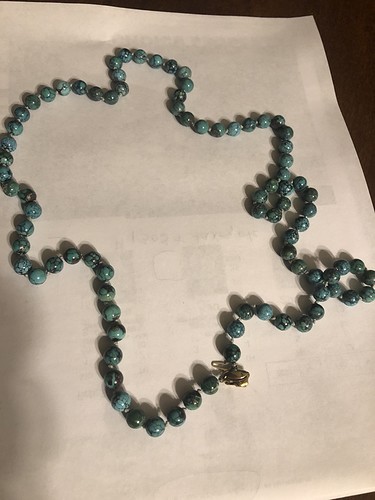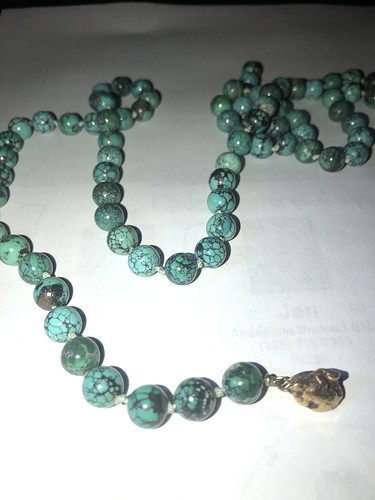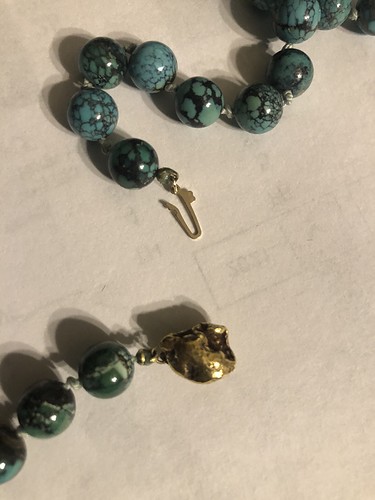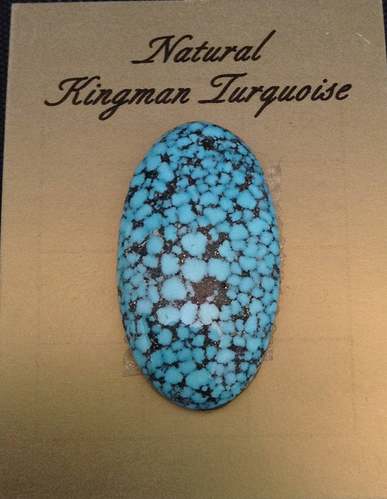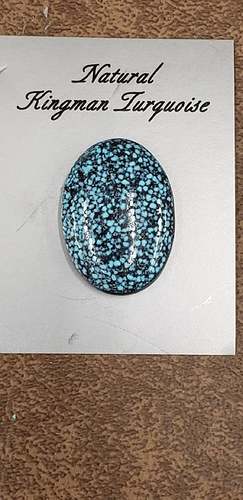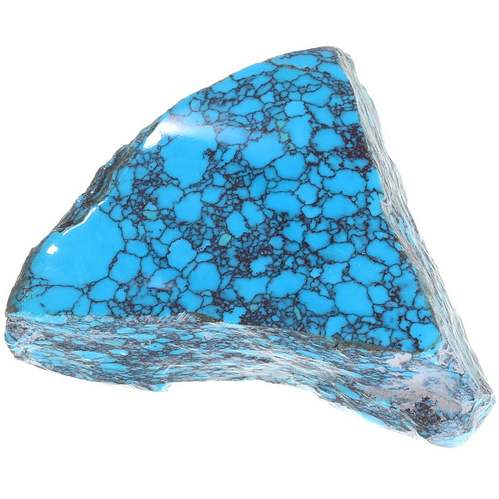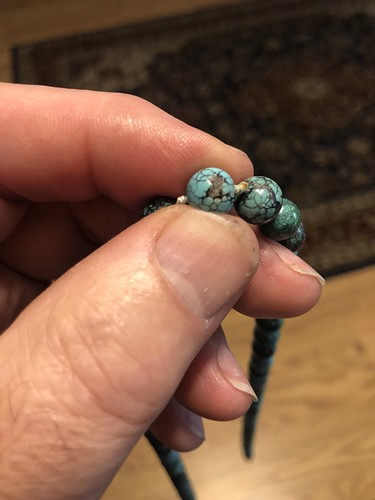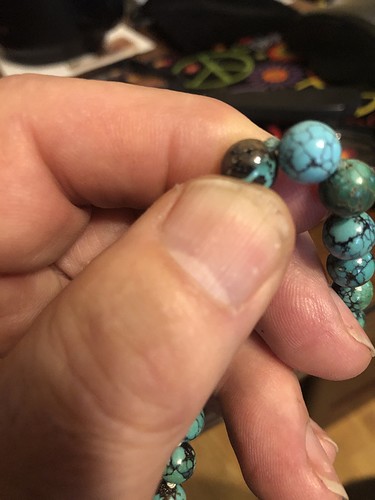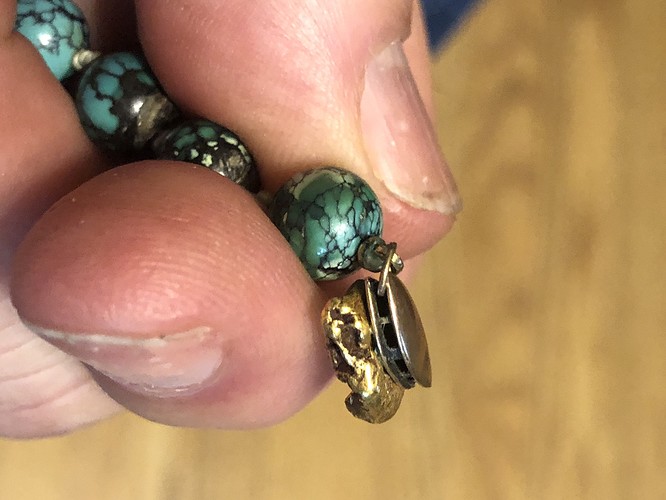This is a 30" 6mm bead necklace with a gold clasp/small nugget. I thought maybe is was malachite but the vein look in the beads throws me. Any thoughts? Thanks for the help.
Could be a man made conglomerate. Have you done any testing on the stones? A hot needle, both on a black part and a turquoise colored part? Checked where the hole is drilled?
Sometimes a black resin is used for beads. Then chips of stones are added.
It is a very pretty necklace, regardless.
Appreciate the input. I did a pin test for plastic on both areas, not plastic. The beads are cool to the touch and fairly heavy.
Hi Ekirsch, Thanks for the post. It’s really hard to tell from the photos if this is real turquoise or not but my guess would be yes. Many mines produce this matrix pattern ( the areas between the blues) This pattern is called Spiderweb and is found all across the globe. That doesn’t make the the turquoise less valuable. In fact this pattern enhances the value in today’s market. I say today’s market because like clothing fashions the desired turquoise has changed over the years and depends a lot on the buyers. Spiderweb is experiencing an upswing in popularity. Here are some photos of spiderweb. The first two are from Kingman Az. and the third is from Hubei prov. in China. I also threw in a chunk of Gibbsite- man- made turquoise substitute. Funny thing is the substitute is more expensive than the Bisbee turquoise it is suppose to imitate. If you have access to a jewelers loop or a magnifier look closely at your stones. If the black is granular or sandy looking it could be real. Also look closely at the blues to see if you can find any cracks of fractures that look like a crack in glass. If so my guess would be at least the blue is real turquoise. And yes they make man-made turquoise out of real turquoise and resin. I hope this helps, Kyle
Can’t see the clasp very well. Do the findings test 14k? Looks like a Chinese turquoise bead strand, which exist in great quantities and at widely varying quality levels.
Thanks for the reply. I did the pin test, definitely not plastic. Stones are cool to the touch. I don’t have a loop, but my 5x magnification does seem to show some sandiness.
I looked bead to bead and found two suspicious ones.
One looks like it was chipped with a silver colored material under it, second a small hole in it.
If this is manufactured, what is the process to make it look like this?
Jeweler tested the clasp and it is gold, he didn’t know for sure what the beads were.
The processes are well known and long standing, and a whole subject unto themselves.
You might start by searching the forum and more generally on Colbaugh processing, Zachary/Zachery method, stabilizing turquoise, enhanced turquoise, and Chinese turquoise as subjects, to get a sense of the wide range of stuff on the market.
Beads in particular are likely to be the product of some process being applied, given how relatively soft turquoise is. So it sure helps to know what you’re buying if there’s real money involved.
